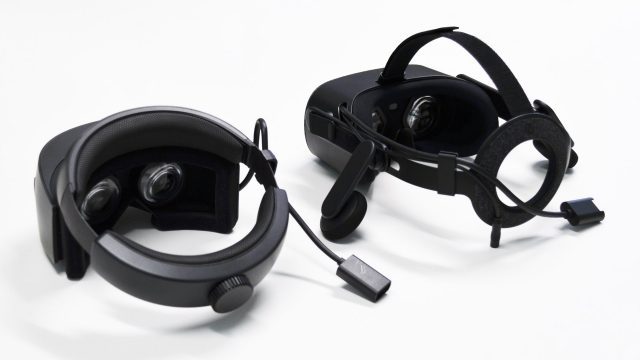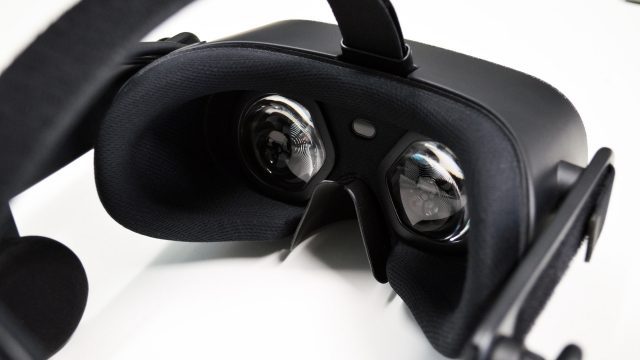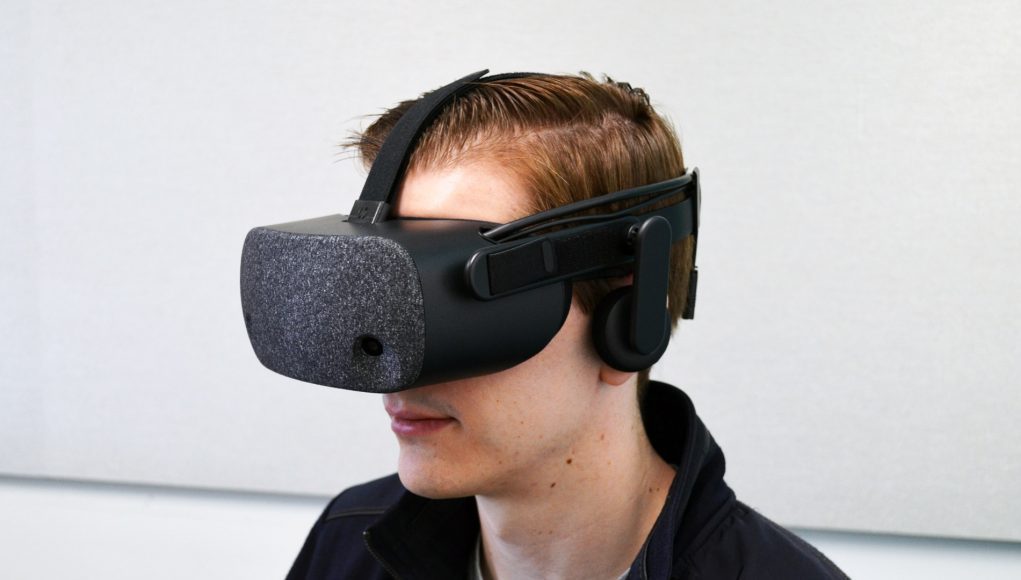HP today announced Reverb (formerly codenamed Copper), its new VR headset which aims to deliver enhanced resolution and comfort. With a more thoughtful design and pixel-packed displays, Reverb sets a new bar for Windows VR headsets.
Having jumped into the VR space back in 2017 with a handful of others under Microsoft’s watch, HP’s first VR headset was pretty much identical to the headsets which launched from Acer, Dell, and Lenovo.
With Reverb—which will succeed the company’s first VR headset—HP is driving the design much more directly, though it is still building atop the Windows Mixed Reality platform (and inside-out tracking technology).
To that end, the company officially announced Reverb today, which will be sold as a Consumer Edition ($600) and a Professional Edition ($650), and launch in late April.

I recently visited HP at their Palo Alto campus to check out the latest Reverb prototype for myself; this is an updated version compared to what I saw back in February.
Let’s skip right to the fun stuff: the displays. Reverb has a 2,160 × 2,160 resolution display per-eye, which is a big step up in resolution even from current class-leading headsets like the Vive Pro and Samsung Odyssey which tout 1,440 × 1,600 displays. We’re talking about twice as many pixels as those headsets.
And while twice the pixels in roughly the same field of view would typically mean about half the visible screen door effect (SDE), Reverb actually gets an extra boost in SDE reduction (compared to the aforementioned headsets) because it uses RGB-stripe sub-pixels which tend to have a much better fill factor (less space between pixels) than the OLED displays used in many other headsets. So not only are you getting a boost in fidelity and pixel density, but fill factor is also going up because of the change to RGB-stripe.
That’s a long way to say that Reverb offers class-leading visual fidelity and text legibility. The screen door effect isn’t invisible, but it’s getting surprisingly close—at this point I can’t make out individual sub-pixels at all, and even truly spotting just one whole pixel (in a sea of identically colored pixels) is a difficult task. Crucially, HP is achieving this clarity and limited SDE without using a diffuser (as Samsung has done on the Odyssey+, which attempts to hide SDE at the cost of sharpness).

Resolution aside, the latest Reverb prototype that I got my head into did show a few subtle artifacts, though HP claims these will be cleared up by launch.
First, compared to the prior prototype I tried back in February, the little grey dots have been significantly reduced, but still manifest in what looks (to my eyes) like mura (inconsistencies in color/brightness between pixels).
Second, the latest prototype display shows some red ghosting, which is interesting because I don’t recall seeing this in any other headset (usually it’s just white or black ghosting). HP said this is because the current display has slower red decay than it should have, meaning that red pixels can’t change as quickly as other colored pixels.
Third, at the extreme top and bottom of the field of view it’s possible to see some reflections at the edges, caused by the display reflecting off the plastic inside the headset.
As mentioned, HP says these will all be cleared up by the time the headset ships, and the progress I saw with the headset from just a few weeks ago bodes well for them being able to deliver on that claim.







